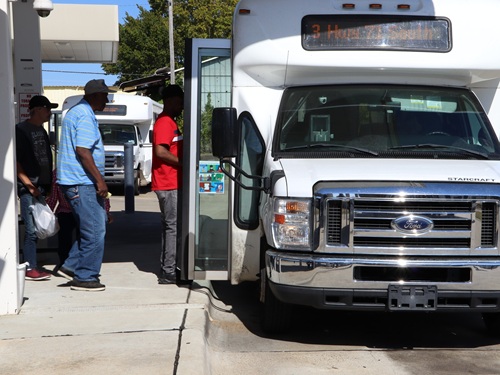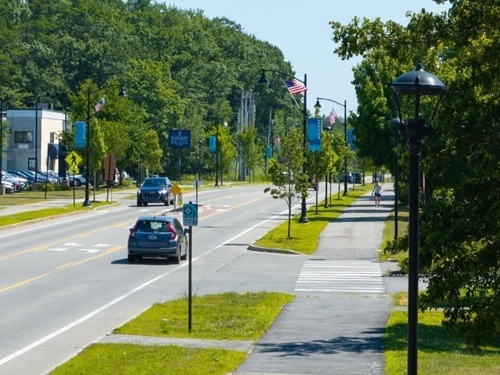The Maine Department of Transportation recently launched a new online resource aimed at cataloging its roadway safety efforts while buttressing the agency’s overall vision of a safe and equitable transportation system.
[Above photo by Maine DOT]
The new “2024 Safety Initiatives” online story map includes information regarding Maine DOT’s efforts to utilize “context-specific decision-making” in how the agency sets speed limits, manages roadway speeds, and implements its updated Complete Streets policy to ensure all transportations system users can get where they are going.
[Editor’s note: In a separate effort, the department recently awarded $2 million in state funds for support transit providers statewide as part of the Maine State Transit Plan, which seeks to increase service, improve information, remove barriers, and address the needs of underserved populations in rural Maine.]

“At Maine DOT, we have always been early adopters of many safety-related practices, and these new tools represent an important step forward in the safety portion of our mission,” noted Maine DOT Commissioner Bruce Van Note in a statement.
“To keep improving safety for our customers, our team members continuously monitor national highway safety practices and programs to identify, test, and implement new measures that can make a real difference here in Maine,” he added.
The new online resource page includes several important key Maine DOT policies and tools, including:
- Maine DOT’s new Roadway Context Classification System, including a map of context classifications statewide and an explanation of the different classifications.
- Information regarding Maine DOT’s new speed-limit-setting process and speed management guidance including a set of traffic-calming measures and tools.
- Maine DOT’s updated Complete Streets Policy, which now includes additional guidance regarding context-specific design elements that benefit safety, walking, and bicycling.
The page also includes information on Maine DOT’s updated Local Cost Share Policy. While not a safety initiative by itself, this policy does have impacts on how infrastructure and safety projects are funded, the agency said.
Other state departments of transportation are engaged in creating similar resources to address a host of mobility safety needs.
For example, the Maryland State Highway Administration (SHA) – a division of the Maryland Department of Transportation – is working to strengthen commitment to improve safety for vulnerable road users; defined as individuals walking, cycling or rolling, who are at a higher risk of injury or fatalities in crashes.
To better understand their challenges, the agency noted in a statement that it has launched an online statewide survey and is inviting public input through January 31, 2025.
The survey, conducted by the SHA’s Office of Traffic and Safety, will collect feedback to help guide future infrastructure decisions aimed at making Maryland’s roads safer for all users. Participants can use a digital map to pinpoint key locations, such as neighborhoods, workplaces and routes where enhanced biking and walking infrastructure would make a difference, Maryland DOT said.
Data from this survey will also play a key role within Maryland DOT’s “Complete Streets” policy, which prioritizes safe, reliable, equitable and sustainable travel across all modes to make roads safer and connect Marylanders to jobs, education and economic opportunity.
 States
States
Nick Donohue Appointed Virginia’s Secretary of Transportation
December 12, 2025 States
States

